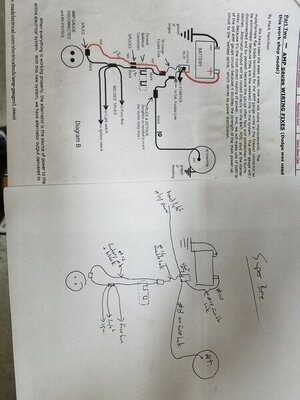- Local time
- 11:46 PM
- Joined
- Apr 13, 2012
- Messages
- 35,546
- Reaction score
- 125,211
- Location
- Granite Bay CA
It was over 100 again today but I felt motivated to do something so....

I bought 2 muffler clamps, sized 3". They were cut down the middle.....

That gold colored plate was welded in between them...


Here is the mock up:



Looks much better than the flimsy way the manufacturer designed it to mount.



So far, I'm into this little project about $7. Yeah, seven dollars. Okay, add in welding wire & gas, electricity, blah, blah...
The sway bar was bought 8 years ago for $25 but I traded some stuff I had in the attic to get this. The metal for the brackets was already here. The bushings were too. The only thing I've dipped into the pocket for is the muffler clamps I used to make the mounts above.
I love this stuff!
I bought 2 muffler clamps, sized 3". They were cut down the middle.....
That gold colored plate was welded in between them...
Here is the mock up:
Looks much better than the flimsy way the manufacturer designed it to mount.
So far, I'm into this little project about $7. Yeah, seven dollars. Okay, add in welding wire & gas, electricity, blah, blah...
The sway bar was bought 8 years ago for $25 but I traded some stuff I had in the attic to get this. The metal for the brackets was already here. The bushings were too. The only thing I've dipped into the pocket for is the muffler clamps I used to make the mounts above.
I love this stuff!

















